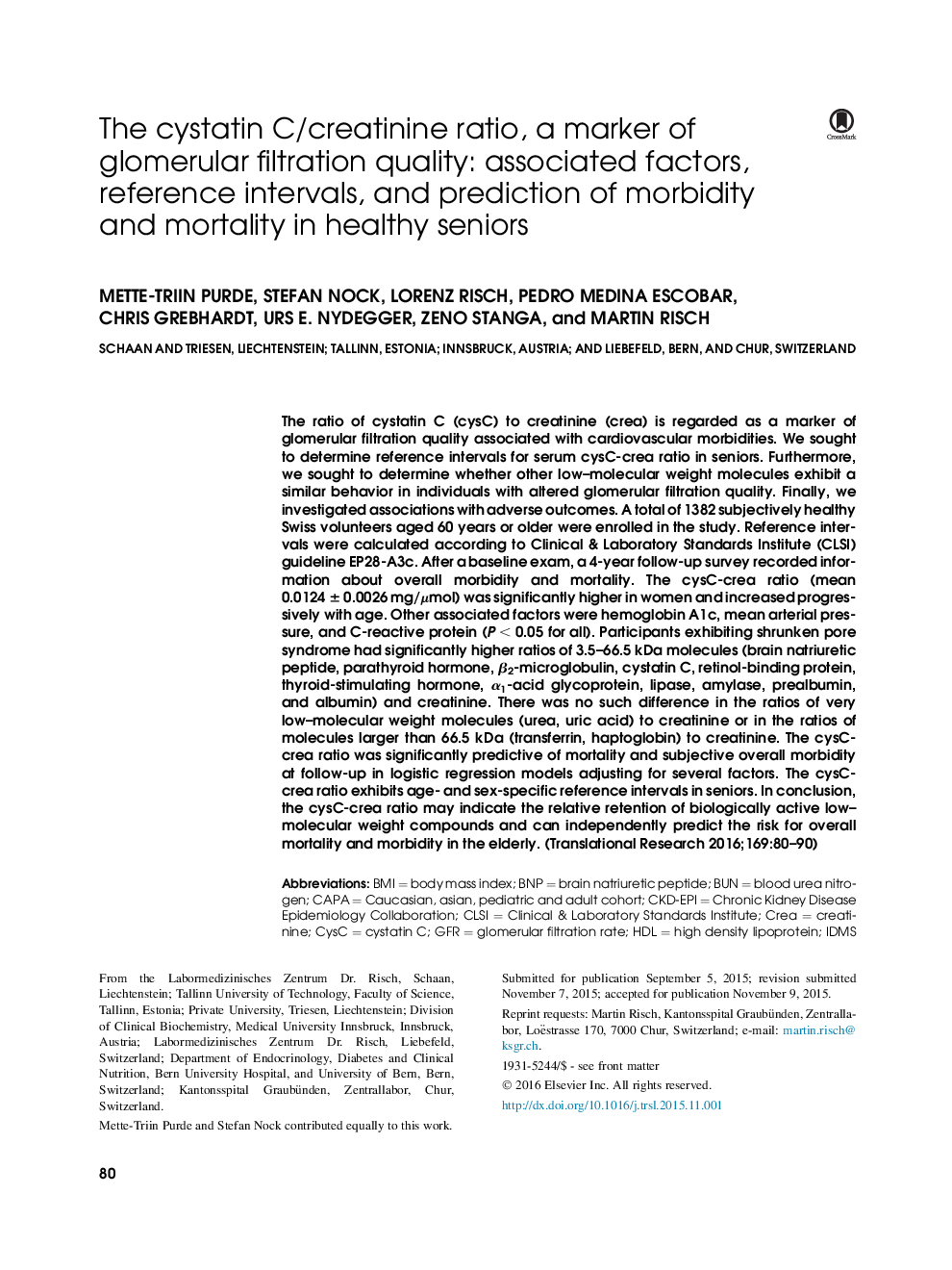| کد مقاله | کد نشریه | سال انتشار | مقاله انگلیسی | نسخه تمام متن |
|---|---|---|---|---|
| 6156072 | 1597941 | 2016 | 13 صفحه PDF | دانلود رایگان |

The ratio of cystatin C (cysC) to creatinine (crea) is regarded as a marker of glomerular filtration quality associated with cardiovascular morbidities. We sought to determine reference intervals for serum cysC-crea ratio in seniors. Furthermore, we sought to determine whether other low-molecular weight molecules exhibit a similar behavior in individuals with altered glomerular filtration quality. Finally, we investigated associations with adverse outcomes. A total of 1382 subjectively healthy Swiss volunteers aged 60 years or older were enrolled in the study. Reference intervals were calculated according to Clinical & Laboratory Standards Institute (CLSI) guideline EP28-A3c. After a baseline exam, a 4-year follow-up survey recorded information about overall morbidity and mortality. The cysC-crea ratio (mean 0.0124 ± 0.0026 mg/μmol) was significantly higher in women and increased progressively with age. Other associated factors were hemoglobin A1c, mean arterial pressure, and C-reactive protein (P < 0.05 for all). Participants exhibiting shrunken pore syndrome had significantly higher ratios of 3.5-66.5 kDa molecules (brain natriuretic peptide, parathyroid hormone, β2-microglobulin, cystatin C, retinol-binding protein, thyroid-stimulating hormone, α1-acid glycoprotein, lipase, amylase, prealbumin, and albumin) and creatinine. There was no such difference in the ratios of very low-molecular weight molecules (urea, uric acid) to creatinine or in the ratios of molecules larger than 66.5 kDa (transferrin, haptoglobin) to creatinine. The cysC-crea ratio was significantly predictive of mortality and subjective overall morbidity at follow-up in logistic regression models adjusting for several factors. The cysC-crea ratio exhibits age- and sex-specific reference intervals in seniors. In conclusion, the cysC-crea ratio may indicate the relative retention of biologically active low-molecular weight compounds and can independently predict the risk for overall mortality and morbidity in the elderly.
Journal: Translational Research - Volume 169, March 2016, Pages 80-90.e2